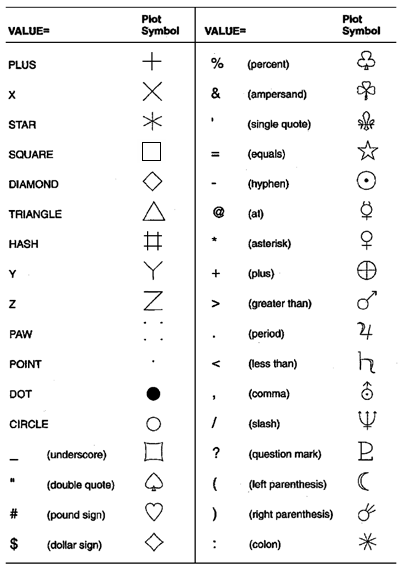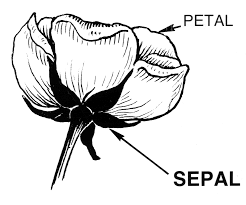-
value (v) Sets the symbol to be used plotting. Possible values include keyboard symbols enclosed
in quotes or these special symbols not enclosed in quotes:

color (c) Sets the color of a symbol.
height (h) Sets the height of a symbol. The units can be specified after the height. If units are not specified, the height is a multiple of the default character size. Other units can be specified with in the goptions statement.
interpol (i) Sets the interpolation method. Some interpolation options are NONE, JOIN, NEEDLE, HILOxxx (x can be T, B, C, or J).
